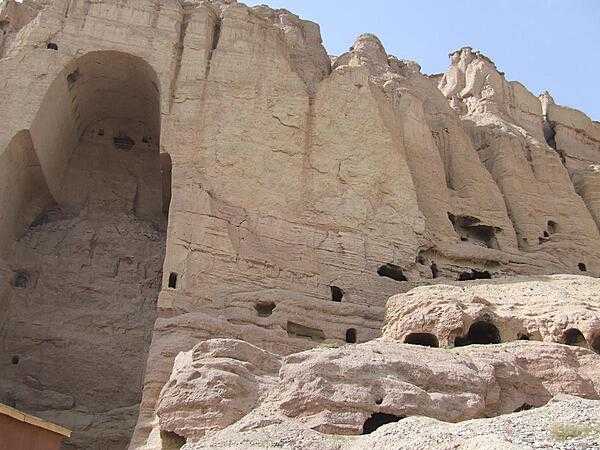Afghanistan’s Rich History of Ancient Civilizations

Afghanistan is a country with a profound historical legacy, home to several ancient civilizations that have influenced the development of human culture, art, and trade over thousands of years. Strategically located at the crossroads of Central Asia, South Asia, and the Middle East, Afghanistan has long been a meeting place for diverse peoples and cultures.
The Indus Valley Civilization (c. 3300–1300 BCE)
One of the earliest and most influential civilizations in the region was the Indus Valley Civilization, which is now considered one of the cradles of modern civilization. Though its main centers were located in present-day Pakistan and northwest India, parts of the civilization extended into eastern Afghanistan, especially in the areas around Balkh and the Kabul River valley.
Archaeological sites such as Shortugai and Tilla Tepe in Afghanistan reveal evidence of the Indus Valley’s trade networks and cultural exchange with other civilizations. The people of this civilization are credited with early advances in urban planning, writing systems, and the development of advanced drainage systems.
Achaemenid Empire (c. 550–330 BCE)
Afghanistan was a crucial part of the Achaemenid Persian Empire, founded by Cyrus the Great. The Achaemenids ruled over a vast expanse of land, including much of Afghanistan, and used the region as a bridge between Persia (modern-day Iran) and India.
Afghanistan was home to several important cities during this period, including Bactra (Balkh), which became a major cultural and intellectual center. Persian influence in art, architecture, and administration was significant, with archaeological evidence of Persian-style palaces, inscriptions, and coins found across the region. The city of Persepolis, a major Achaemenid capital, also had connections to Afghanistan, underscoring the region’s importance.
Greek Influence: The Greco-Bactrian Kingdom (c. 250 BCE – 125 BCE)
Following the conquest of the Persian Empire by Alexander the Great in 330 BCE, Afghanistan became part of the Hellenistic world. The region known as Bactria (roughly corresponding to modern-day northern Afghanistan) became a significant center of Greek culture and influence.
Alexander founded several cities, including Alexandria on the Oxus (modern-day Ai-Khanoum), which became a key outpost of Greek culture. After Alexander’s death, the region was ruled by the Greco-Bactrian Kingdom, where Greek and Central Asian cultures blended. Greek influences in art, architecture, and coinage are still visible in the archaeological record, particularly in Bactrian coins that feature Greek gods and symbols.
The Kushan Empire (c. 30–375 CE)
The Kushan Empire was one of the most important empires to emerge in Afghanistan’s history. It spanned large portions of Central Asia, northern India, and parts of China. The Kushans played a crucial role in the spread of Buddhism across Central Asia and China, as well as facilitating cultural exchanges along the Silk Road.
The Kushan rulers were patrons of both Hellenistic and Indian art and culture, which led to a fusion of artistic styles. Buddhist art, including the famous Buddha statues of Bamiyan (which were tragically destroyed by the Taliban in 2001), flourished under Kushan rule. This blending of Greek, Indian, and Central Asian artistic traditions led to the development of Greco-Buddhist art, which is highly regarded for its unique synthesis of cultural elements.
The Sassanid Empire (224–651 CE)
After the fall of the Kushan Empire, Afghanistan came under the influence of the Sassanid Persian Empire. The Sassanids brought Persian culture, Zoroastrianism, and advanced governance to the region. Their empire stretched from modern-day Iran through parts of Afghanistan, where they established several key cities, including Herat.
The Sassanids also facilitated trade along the Silk Road, connecting the East and West. The Persian influence continued to shape Afghan culture, especially in areas of administration, art, and religion.
Islamic Conquest and the Great Empires of Afghanistan
In the 7th century, Islam spread across Afghanistan following the Arab conquest. This marked the beginning of a new chapter in the country’s history. Over the centuries, several great Islamic empires and dynasties, such as the Ghaznavid Empire (971–1186), the Ghurid Empire (879–1215), and the Mughal Empire (1526–1857), rose to power and left a lasting legacy on Afghan culture.
The Ghaznavid Empire, for example, ruled over a large portion of Afghanistan and the Indian subcontinent, fostering Islamic art, literature, and architecture. Balkh, often called the “Mother of Cities,” became a major center of Islamic culture during the Islamic Golden Age.
Afghanistan’s Role in the Silk Road
Afghanistan’s position at the crossroads of several civilizations made it an essential hub in the Silk Road trade route, which connected the East and West. Merchants, scholars, and travelers passed through Afghanistan, bringing with them goods, knowledge, and religious beliefs.
The city of Herat became particularly well-known during the Timurid Empire in the 15th century for its vibrant cultural and intellectual life. Scholars, poets, and artists from various regions gathered there, contributing to the flourishing of Persian literature, science, and art.
Legacy of Afghanistan’s Ancient Civilizations
Today, Afghanistan is home to a rich archaeological heritage, with numerous ancient sites that reveal the complexities of its past. These civilizations, including the Indus Valley, Achaemenid, Greek, Kushan, and Sassanid, left behind incredible artifacts, cities, and cultural influences that still shape the region today.
While the country has faced significant challenges in recent decades, its historical legacy remains a testament to the many great civilizations that passed through or called Afghanistan home. The art, culture, and ideas from these civilizations continue to resonate in Afghan life and the broader world.